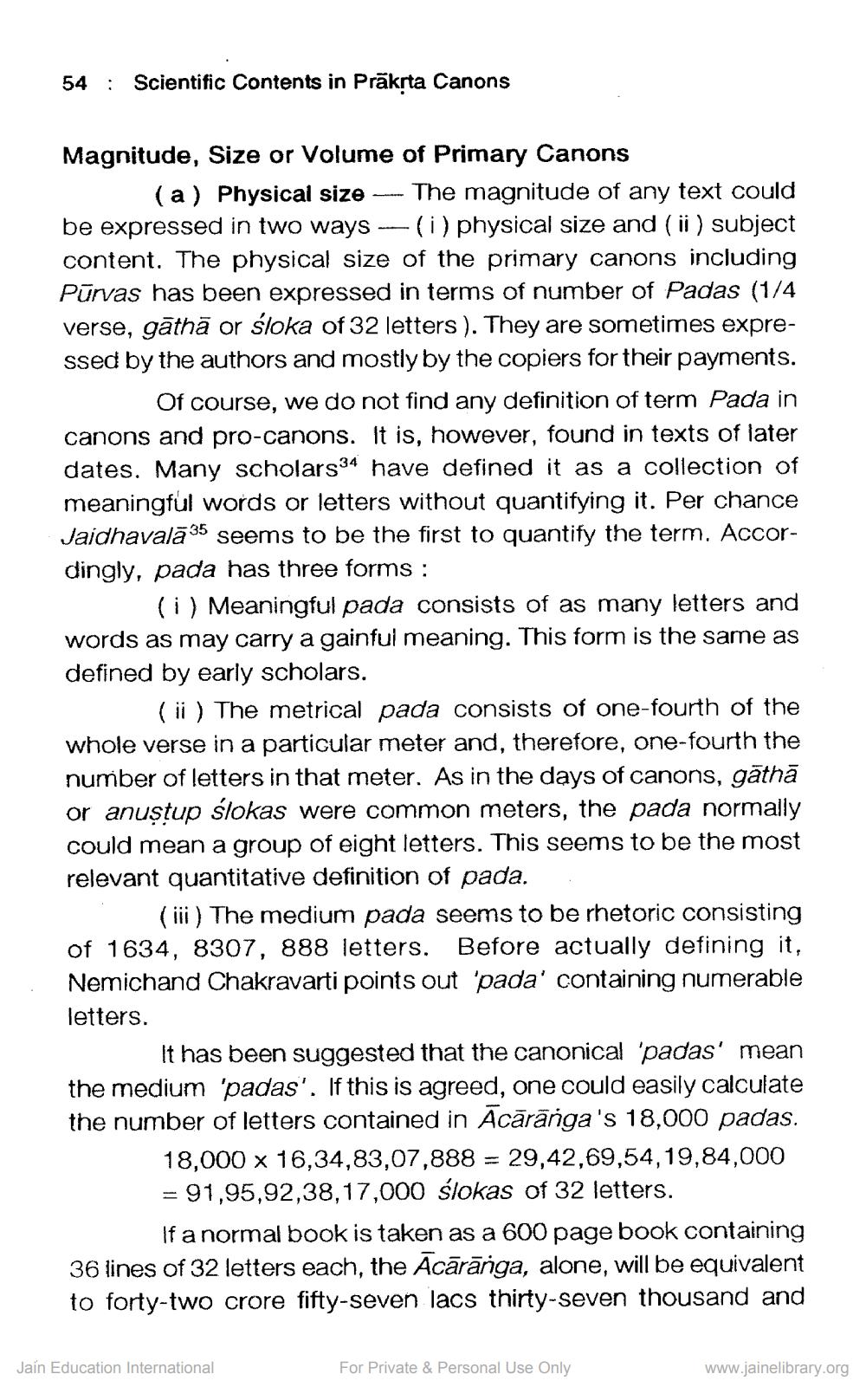________________
54
: Scientific Contents in Prākṛta Canons
Magnitude, Size or Volume of Primary Canons
(a) Physical size The magnitude of any text could be expressed in two ways (i) physical size and (ii) subject content. The physical size of the primary canons including Pūrvas has been expressed in terms of number of Padas (1/4 verse, gāthā or sloka of 32 letters). They are sometimes expressed by the authors and mostly by the copiers for their payments.
Of course, we do not find any definition of term Pada in canons and pro-canons. It is, however, found in texts of later dates. Many scholars34 have defined it as a collection of meaningful words or letters without quantifying it. Per chance Jaidhavalā 35 seems to be the first to quantify the term. Accordingly, pada has three forms:
(i) Meaningful pada consists of as many letters and words as may carry a gainful meaning. This form is the same as defined by early scholars.
(ii) The metrical pada consists of one-fourth of the whole verse in a particular meter and, therefore, one-fourth the number of letters in that meter. As in the days of canons, gāthā or anuştup slokas were common meters, the pada normally could mean a group of eight letters. This seems to be the most relevant quantitative definition of pada.
(iii) The medium pada seems to be rhetoric consisting of 1634, 8307, 888 letters. Before actually defining it, Nemichand Chakravarti points out 'pada' containing numerable letters.
It has been suggested that the canonical 'padas' mean the medium 'padas'. If this is agreed, one could easily calculate the number of letters contained in Acārānga's 18,000 padas.
18,000 x 16,34,83,07,888 = 29,42,69,54,19,84,000 = 91,95,92,38,17,000 slokas of 32 letters.
If a normal book is taken as a 600 page book containing 36 lines of 32 letters each, the Acaranga, alone, will be equivalent to forty-two crore fifty-seven lacs thirty-seven thousand and
Jaín Education International
For Private & Personal Use Only
www.jainelibrary.org




